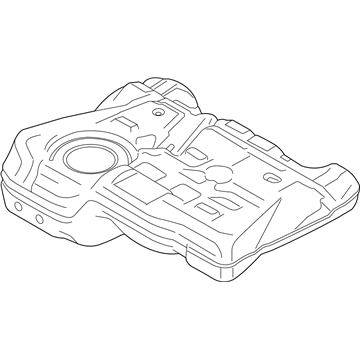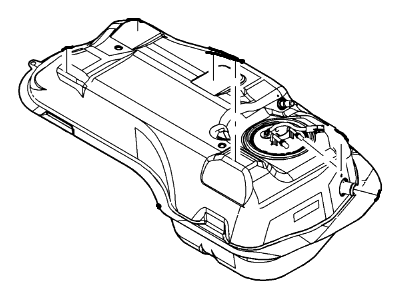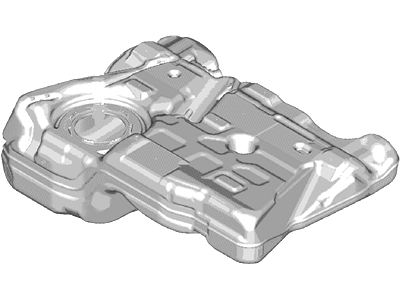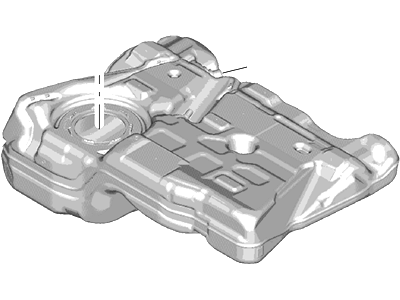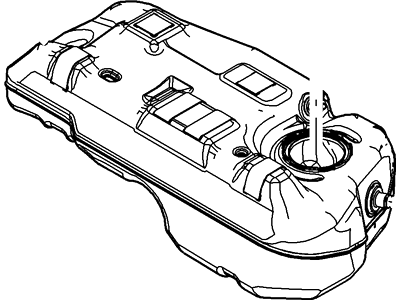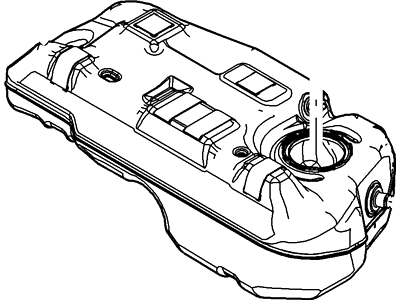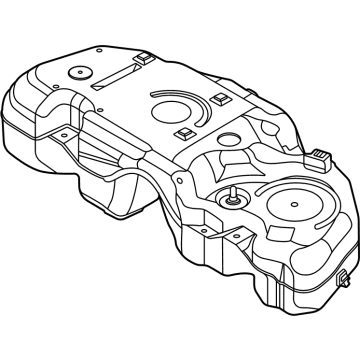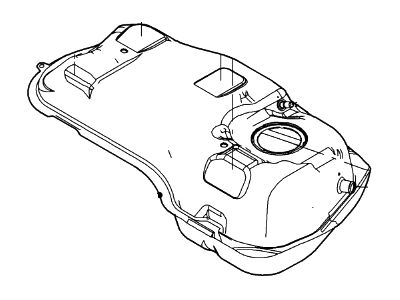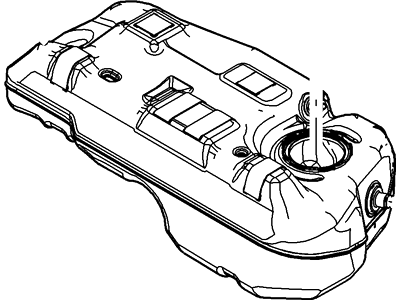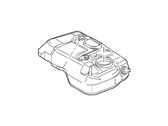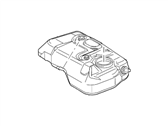×
- Live Chat
- 1-888-788-9341


My Garage
My Account
Cart
Genuine Ford Escape Fuel Tank
Gas Tank- Select Vehicle by Model
- Select Vehicle by VIN
Select Vehicle by Model
orMake
Model
Year
Select Vehicle by VIN
For the most accurate results, select vehicle by your VIN (Vehicle Identification Number).
41 Fuel Tanks found
Ford Escape TANK ASY - FUEL
Part Number: LX6Z-9002-A$382.01 MSRP: $584.12You Save: $202.11 (35%)Ships in 1-2 Business DaysFord Escape Fuel Tank Assembly
Part Number: 8L8Z-9002-B$658.34 MSRP: $914.55You Save: $256.21 (29%)Ships in 1-2 Business DaysFord Escape TANK ASY - FUEL
Part Number: LX6Z-9002-U$348.91 MSRP: $514.62You Save: $165.71 (33%)Ships in 1-2 Business DaysFord Escape Fuel Tank Assembly
Part Number: DV6Z-9002-G$633.74 MSRP: $943.07You Save: $309.33 (33%)Ships in 1-3 Business DaysFord Escape Fuel Tank Assembly
Part Number: DV6Z-9002-F$633.74 MSRP: $943.07You Save: $309.33 (33%)Ships in 1-3 Business DaysFord Escape Fuel Tank Assembly
Part Number: HV6Z-9002-A$851.29 MSRP: $1266.80You Save: $415.51 (33%)Ships in 1-3 Business DaysFord Escape Fuel Tank Assembly
Part Number: CV6Z-9002-A$633.74 MSRP: $943.07You Save: $309.33 (33%)Ships in 1-3 Business DaysFord Escape TANK ASY - FUEL
Part Number: LX6Z-9002-S$396.21 MSRP: $584.38You Save: $188.17 (33%)Ships in 1-2 Business DaysFord Escape Fuel Tank Assembly
Part Number: GV6Z-9002-A$851.29 MSRP: $1266.80You Save: $415.51 (33%)Ships in 1-3 Business DaysFord Escape Fuel Tank Assembly
Part Number: AL8Z-9002-A$885.57 MSRP: $1317.82You Save: $432.25 (33%)Ships in 1-3 Business DaysFord Escape Fuel Tank Assembly
Part Number: AL8Z-9002-B$885.57 MSRP: $1317.82You Save: $432.25 (33%)Ships in 1-3 Business DaysFord Escape Fuel Tank Assembly
Part Number: AL8Z-9002-C$885.57 MSRP: $1317.82You Save: $432.25 (33%)Ships in 1-3 Business DaysFord Escape Fuel Tank Assembly
Part Number: AL8Z-9002-D$885.57 MSRP: $1317.82You Save: $432.25 (33%)Ships in 1-3 Business DaysFord Escape Fuel Tank Assembly
Part Number: AL8Z-9002-E$885.57 MSRP: $1317.82You Save: $432.25 (33%)Ships in 1-3 Business DaysFord Escape TANK ASY - FUEL
Part Number: LX6Z-9002-X$460.46 MSRP: $679.15You Save: $218.69 (33%)Ships in 1-2 Business DaysFord Escape TANK ASY - FUEL
Part Number: LX6Z-9002-R$1034.84 MSRP: $1539.93You Save: $505.09 (33%)Ships in 1-2 Business Days
| Page 1 of 3 |Next >
1-20 of 41 Results
Ford Escape Fuel Tank
Thus, Ford Escape Fuel Tank is specialized for the storage of fuel and contains the electric fuel pump and the fuel gauge sender. It has baffles for the fuel movement and is part of the Evaporative Emission Control System, and may either be a metal or a plastic part. Metal tanks are stamped and welded, on the other hand, plastic tanks are blow molded. Ford Escape Fuel Tanks are subjected to a leak test before coming to the market and they are supplied with other related parts in case of repairs. Indy fuel tanks are crash resilient and are made not to spill gas in the event of an accident. Range tanks fabricated from military-specified polymer material can increase the driving range by 500 miles; they are less vulnerable to corrosion than steel-type fuel tanks.
We provide a wide range of Ford Escape Fuel Tank at the best prices possible. If you need Ford Escape Fuel Tank, you can shop with confidence on our website. All our OEM parts come with a manufacturer's warranty and are delivered to your door step with a fast delivery service.
Ford Escape Fuel Tank Parts Questions & Experts Answers
- Q: How to remove and install a fuel tank on Ford Escape?A: There is no fuel tank drain plug, so it's easier to remove the fuel tank when it's nearly empty. If that's not possible, try to siphon out the fuel in the tank before removing it. Relieve the fuel system pressure and disconnect the cable from the negative battery terminal. Working inside the vehicle, disconnect the electrical connectors from the fuel pump/fuel level sending unit module and from the fuel pressure sensor. Also disconnect the fuel line(s); some models have two, others only have one. If there's still a lot of fuel in the tank, siphon or hand pump the remaining fuel from the tank now. You can siphon the fuel out of the tank through the hole in the top of the tank for the fuel pump/fuel level sending unit module, or through the fuel filler neck or through the fuel filler neck pipe, after you have disconnected the fuel filler neck hose from the fuel tank. Loosen the left rear wheel lug nuts, raise the vehicle and place it securely on jackstands, then remove the left rear wheel. Drill out the rivets that attach the fuel filler hose shield and remove the shield. Disconnect the fuel tank filler hose and the fuel tank filler vent hose from the fuel tank filler tube. On 4WD models, remove the driveshaft, remove the differential mounting bracket to subframe mounting bolt, remove the differential to bracket bolts, loosen the differential mounting bracket to subframe mounting bolts, rotate the brackets and position the axle assembly to the rear. Support the fuel tank with a transmission jack or a floor jack. If you're going to use a floor jack, place a sturdy piece of plywood between the jack head and the tank to protect the tank. Disconnect the EVAP hose and disconnect the pin type retainer that attaches the parking brake to the left fuel tank strap.On 4WD models, disconnect the wiring harness clip from the rear of the left fuel tank strap. Raise the vehicle and support it securely on jackstands. Remove the muffler and resonator. On 4WD models, remove the rear driveshaft. Detach the filler hose from the fuel tank and disconnect the parking brake retainer and the wiring harness retainer from the left fuel tank support strap. Place a floor jack under the fuel tank with a piece of plywood to protect the tank. Raise the jack enough to take weight off the support straps. Remove the fuel tank strap bolts and swing the fuel tank straps down and out of the way. Lower the tank enough to have a look at the top of the tank and unclip or detach any remaining cables, hoses or lines. Then, lower the tank the rest of the way. Installation is the reverse of the removal procedure. Note: Replace the O-ring seal whenever the module is removed. After you've reconnected the battery, the Powertrain Control Module (PCM) must relearn its idle and fuel trim strategy for optimum driveability and performance.
- Q: What precautions should be taken when repairing the fuel tank or filler neck on Ford Escape?A: All repairs being done on the fuel tank/filler neck should be done by a professional who is very knowledgeable in this potentially dangerous work. Please be sure to note that even after cleaning and flushing the fuel system, explosive fumes can still remain and ignite during tank repair and cause explosions if there is any mishandling.
Related Ford Escape Parts
Browse by Year
2023 Fuel Tank 2022 Fuel Tank 2021 Fuel Tank 2020 Fuel Tank 2019 Fuel Tank 2018 Fuel Tank 2017 Fuel Tank 2016 Fuel Tank 2015 Fuel Tank 2014 Fuel Tank 2013 Fuel Tank 2012 Fuel Tank 2011 Fuel Tank 2010 Fuel Tank 2009 Fuel Tank 2008 Fuel Tank 2007 Fuel Tank 2006 Fuel Tank 2005 Fuel Tank 2004 Fuel Tank 2003 Fuel Tank 2002 Fuel Tank 2001 Fuel Tank
